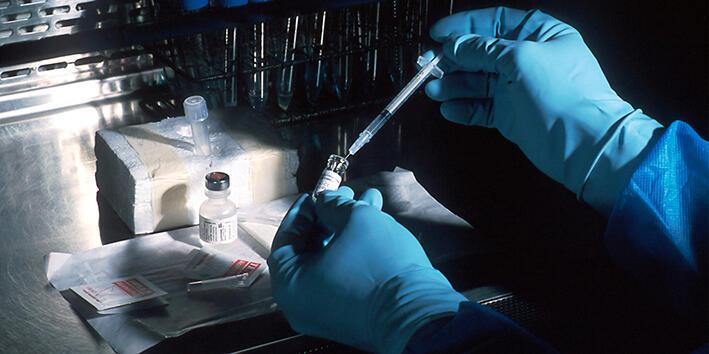Human chimeras are individuals that contain two different types of DNA. Chimeras are named after the mythical creature made up of different animals including a lion and a goat. People can get a second set of DNA in the womb, through transplants or when they are pregnant.
Let's see how these different types of chimerism occur and the effects human chimeras have on forensics.
Chimerism in the womb
Chimerism can occur during fraternal multiple pregnancies when one embryo dies early on, and the other one absorbs some of the cells of its twin. A fraternal pregnancy is when two eggs are fertilised by two different sperm which creates non-identical twins.
This type of chimerism can result in failed maternity or paternity tests. For example, Karen Keegan needed a kidney transplant and family members' blood was tested to see if they could be donors. The tests showed she wasn't the biological mother of two of her three children—surprising, since she'd given birth to them! Further studies showed that some of her tissue contained two different types of DNA. The type in her blood was different to the DNA two of her children inherited. This other DNA came from her twin in the womb, so she was genetically her children's aunt.

Chimerism through transplantation
Chimeras can also be created after transplants, and often this is limited to the organ being transplanted. But in the case of a stem cell transplant, the donor's DNA has been known to spread to other parts of the body.
For example, Chris Long received a bone marrow transplant as part of his treatment for leukaemia. Three months later, he learned that the DNA in his blood was no longer his. Chris continued testing other parts of his body. Four years later, swabs of his mouth contained both his and the donor's DNA, whilst his semen only contained the donor's DNA.

DNA exchanged from baby to mother
A less dramatic form of chimerism occurs during pregnancy where foetal cells are transferred to the mother and can stay in the body for years. This is known as micro-chimerism, due to the low levels of foetal DNA in the mother. Research suggests this happens to all pregnant women. The simplest way to test for it is by searching for the Y chromosome in women who have given birth to sons. Micro-chimerism occurs during every pregnancy. In 2012 scientists found evidence of the Y chromosome in all 26 women sampled who had just given birth to a boy.
The jury is still out on how foetal cells affect mothers. New research suggests micro-chimerism could protect mothers from autoimmune disorders, lower the risk of breast cancer or repair damaged cells. But there is still more work to be done before we will know with certainty.
One benefit of micro-chimerism is the ability to test for foetal diseases using the mother's blood since 6% of it is foetal DNA. These tests are less invasive than previous ones which would take fluid from the amniotic sac.

Consequences on forensics
Human chimeras present a challenge for investigators and may lead to incorrect conclusions. Individuals with two types of DNA in their blood may be interpreted as two people, and the sex or identity taken from tissue samples may be incorrect.
After a car accident in 2008 police were trying to identify a body with blood and kidney tissue samples. The blood was determined to come from a woman and the kidney from a man, but there was only one person in the accident. This confusion was because the man in the accident had received a stem cell transplant from his daughter and his blood now contained her DNA.
During a sexual assault investigation in 2005, police collected semen samples which had a match in the DNA database. However, the suspect had a watertight alibi, being in jail at the time of the crime. The true perpetrator was chimeric, the incarcerated suspect had donated bone marrow years earlier. Therefore, when the chimeric perpetrator committed the crime, his semen contained DNA from someone else not at the scene.

About the 2022 Christmas Lectures
For the 2022 CHRISTMAS LECTURES, forensic anthropologist Sue Black took us along as she illuminated crime scene investigation and opened the doors of leading-edge forensic labs, revealing the most interesting and fascinating aspects of forensic science.

About the author
Mia Berelson is a PhD Student who undertook a 3-month internship at the Royal Institution. Her PhD is based at the Earlham Institute and is funded by UKRI-BBSRC as part of the Norwich Research Park Doctoral Training Programme.